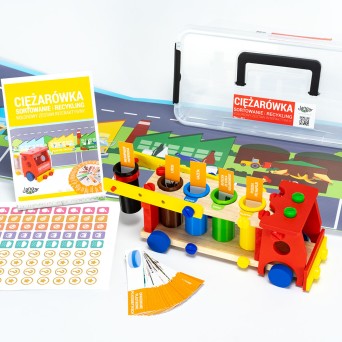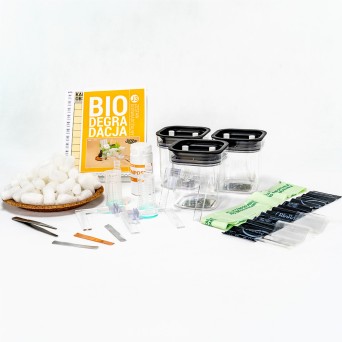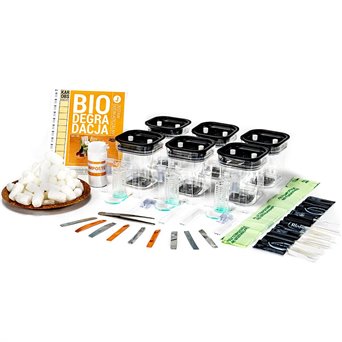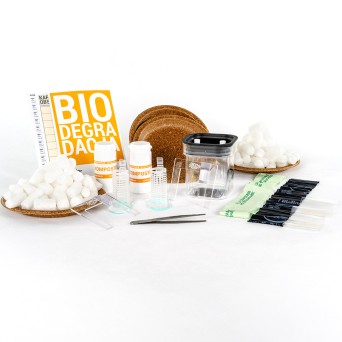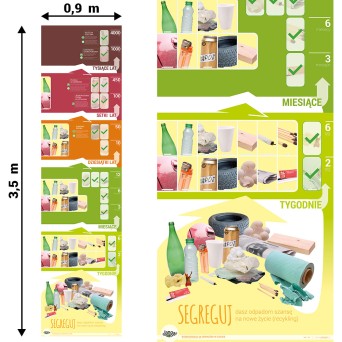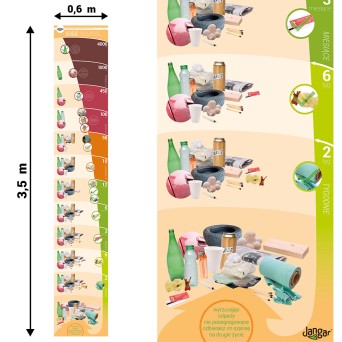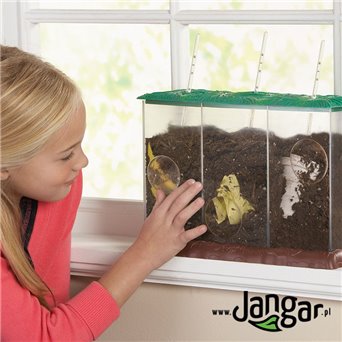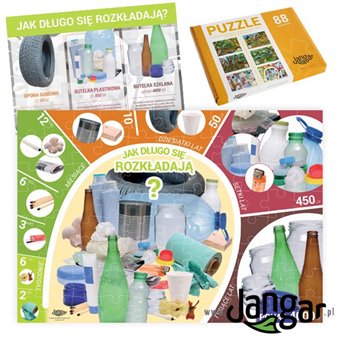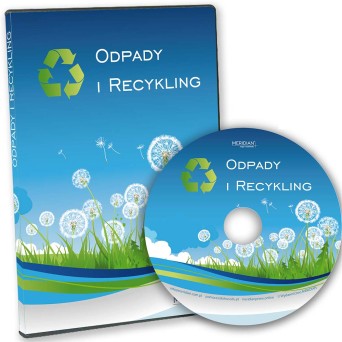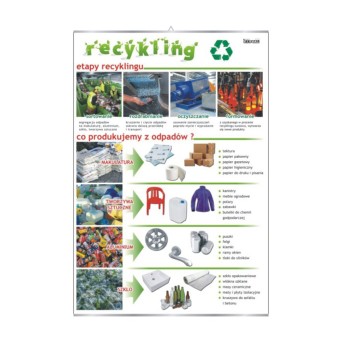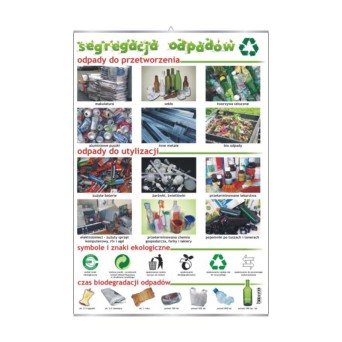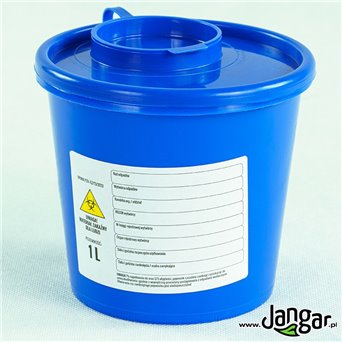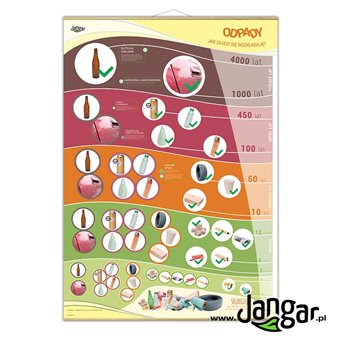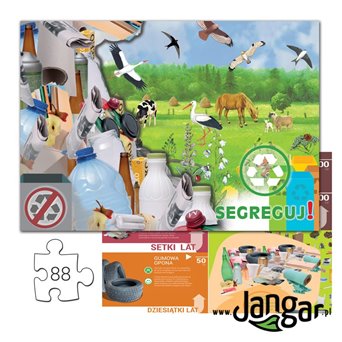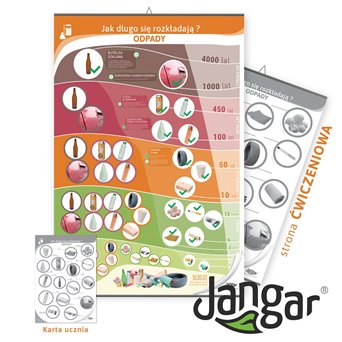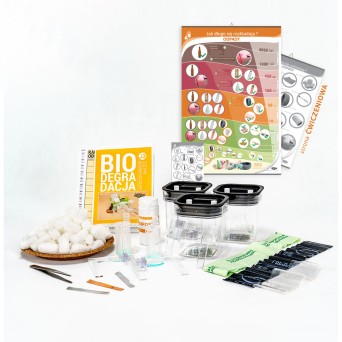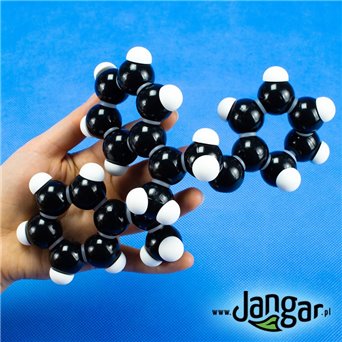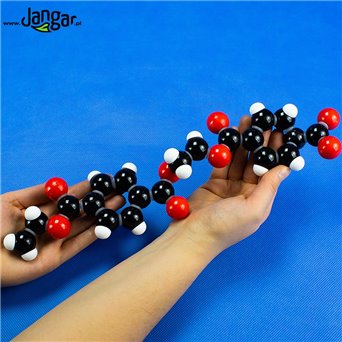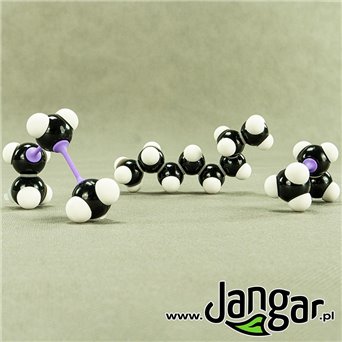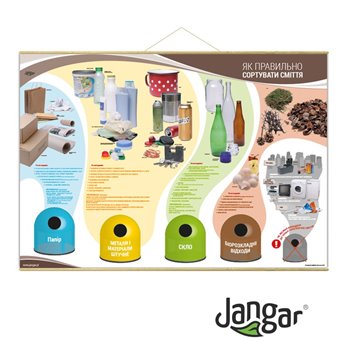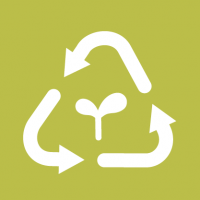
To teach and learn about biodegradation, recycling, and waste management, it is necessary to present and discuss environmental concepts related to environmental pollution. We all need to recognize our own contribution to this pollution and learn how to reduce our impact on the environment. When we realize how quickly we pollute and destroy our planet Earth, and at the same time see how easily we can reduce this devastating process, we can take action - personally, in families, and in the wider community. Let us all start, even with small steps, keeping in mind the simple and effective 3 R's principle: REDUCE, REUSE, RECYCLE!
To educate students, as well as children, adults, and decision-makers, we have prepared various functional models, activity sets, and experimental kits to demonstrate and learn about recycling, waste treatment, and other environmental concepts in the field.
Education on biodegradation, recycling, and waste management is crucial because it increases environmental awareness and encourages actions that contribute to protecting the environment.
Knowledge about biodegradation enables a better understanding of which materials can decompose naturally and which are harmful to the environment. This allows for the avoidance of harmful products and choosing those that will have a lower impact on the planet.
Recycling, on the other hand, allows for the reuse of materials, which reduces the amount of waste and environmental burden. Through education in schools, we can teach children and youth how to sort waste, which enables effective processing and increases the quantity of secondary materials.
Waste is an integral part of everyday life; therefore, it is essential to teach children and youth how to deal with waste, how to minimize its amount, how to correctly segregate and process waste to reduce its negative impact on the environment.
All these topics are crucial in the context of environmental protection and creating a sustainable lifestyle. Therefore, it is important to focus on these issues as part of education in schools so that future generations are well-educated and aware of their impact on the natural environment.
To realize how important an environmental education is, try to answer correctly a guestion:
Can you see a difference between biodegradable and compostable products?
Biodegradable and compostable materials are becoming more and more popular as people are becoming aware of the impact of traditional materials on the environment. While both of these materials are eco-friendly alternatives, they are not the same.
Biodegradable materials break down into natural elements over time, such as carbon dioxide, water, and biomass, without leaving any harmful toxins. However, this process can take years, and the breakdown depends on specific conditions, such as temperature and moisture. It's important to note that some biodegradable materials are made from petroleum-based plastics, which can still leave microplastics in the environment.
On the other hand, compostable materials are specifically designed to break down quickly and completely under certain conditions. They are typically made from plant-based materials, such as corn or potato starch, and do not leave any toxic residue. Composting is a natural process where organic materials break down into nutrient-rich soil, which can then be used for gardening. Composting requires specific conditions, such as the right balance of heat, moisture, and air, to be successful.
One example of the difference between biodegradable and compostable materials can be seen with reusable shopping bags. Biodegradable bags may be made from plant-based materials, but they may not break down completely in a landfill or in the ocean, and could still release harmful toxins. Compostable bags, on the other hand, will break down completely in a composting environment, leaving behind nutrient-rich soil.
In conclusion, it's important to understand the difference between biodegradable and compostable materials, and to choose products made from sustainable and eco-friendly materials whenever possible. By making small changes in our daily lives, such as using compostable bags or choosing products made from biodegradable materials, we can help reduce the impact on the environment and create a better future for our planet.
Recycling is a process of converting waste materials into new products to prevent the waste of potentially useful materials, reduce the consumption of raw materials, and decrease energy usage. The concept of recycling has been around for centuries, but it wasn't until the late 19th century that the first recycling plant was established in the UK.
Today, recycling has become an essential practice worldwide as we face the challenges of waste management and environmental sustainability. Here are some examples of commonly recycled materials and what happens to them after they are recycled:
Plastic - Plastic recycling involves sorting and processing plastic waste into new products such as toys, pipes, and packaging materials. In some cases, recycled plastic is even used to create new clothing and furniture.
PET bottles - PET bottles are recycled into new bottles, clothing, and carpets. The recycling process includes sorting, cleaning, and shredding the bottles into small pieces, which are then melted and formed into new products.
Metals - Metals such as aluminum and steel are commonly recycled into new cans, cars, and construction materials. The recycling process involves melting the metal down and then reforming it into new products.
Paper - Paper recycling involves breaking down old paper into pulp, which is then cleaned, de-inked, and turned into new paper products. Recycled paper is often used to create newspapers, cardboard boxes, and office paper.
Tires - Tires can be recycled into a variety of products, including rubber mulch, playground surfaces, and even new tires. The recycling process involves shredding and grinding the tires into small pieces, which are then used to create new products.
Batteries - Batteries can be recycled to recover valuable materials such as lead, nickel, and cadmium. These materials are then used to create new batteries and other products.
Recycling is a vital process that helps to conserve resources, reduce pollution, and protect the environment. By recycling materials, we can reduce the amount of waste that ends up in landfills and conserve energy and natural resources. It's essential that we all do our part in recycling to help create a more sustainable world for future generations.
Biodegradation is the process of breaking down organic substances in the natural environment, through the action of microorganisms such as bacteria, fungi, and protozoa. Biodegradation occurs naturally in the environment, but due to the increasing production of waste in modern society, it has become a very important topic in public discussions.
Biodegradable materials are those that can break down naturally in the environment through biodegradation, leaving behind only natural components. However, some materials, particularly those made of synthetic plastics, may require many years, or even centuries, to completely decompose.
Special group of biodegradable materials are compostable materials which are specifically designed to break down quickly and safely in a composting facility, usually within a few months. These materials are often used in the production of organic food, and their use can reduce waste and increase the production of natural fertilizer.
Education about biodegradation is incredibly important, especially in schools. Children and young people should learn about which materials are biodegradable, how to sort waste, and the benefits of caring for the environment. This can increase ecological awareness and reduce the amount of waste going to landfills, contributing to the protection of our planet for future generations.





































































































































































































































































































































